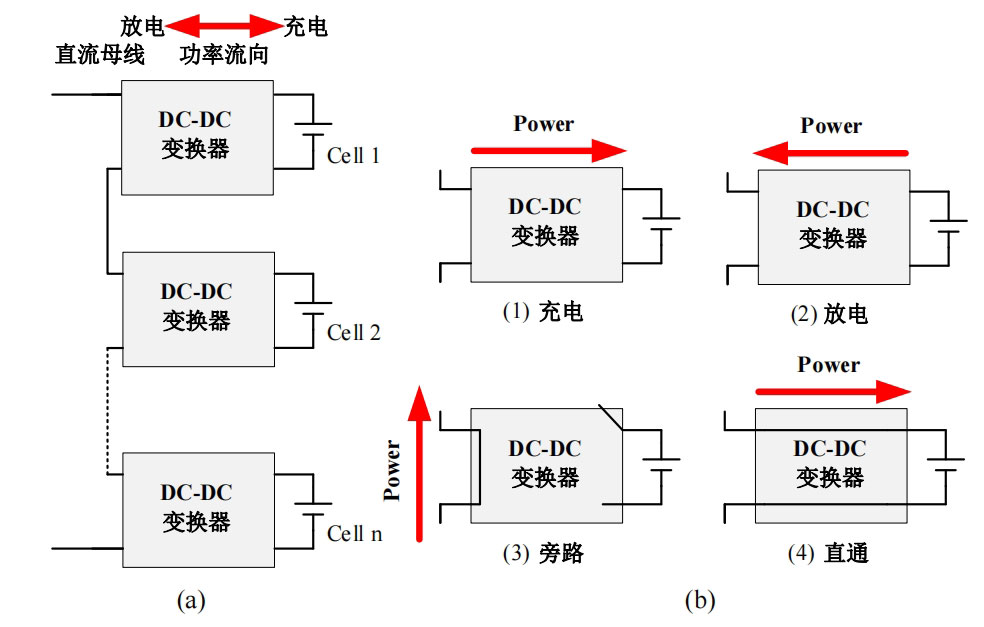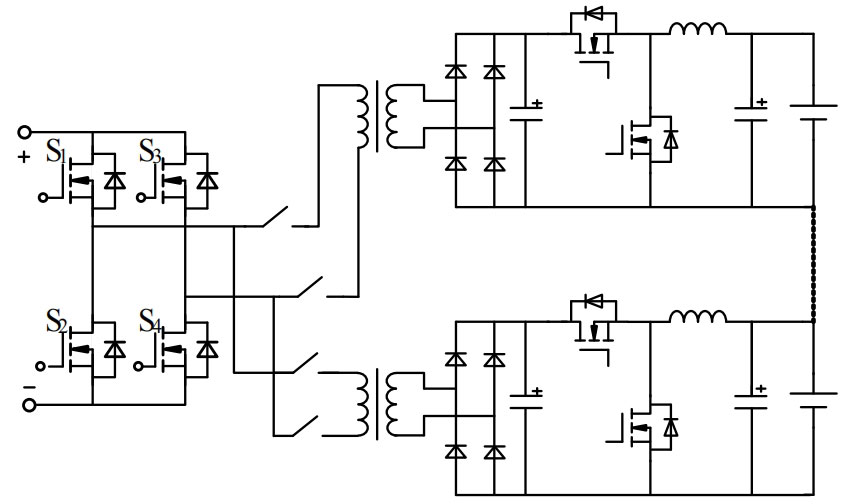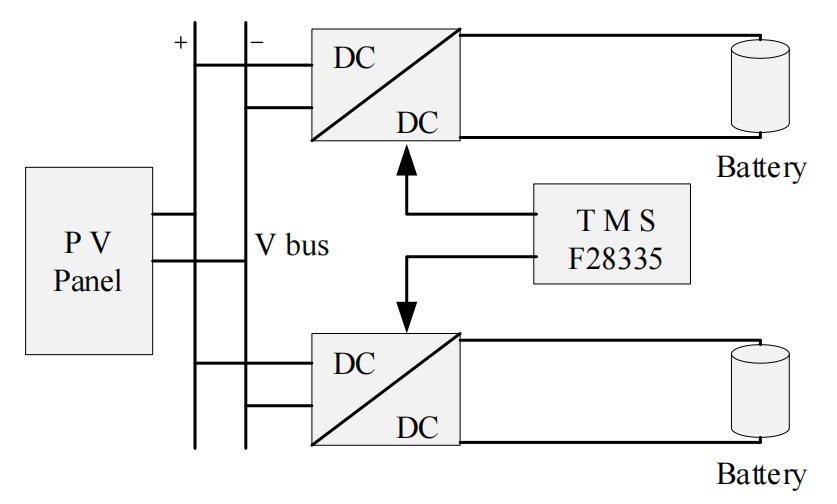In recent years, the distributed charging system of series energy storage power sources has been applied in more and more situations. Due to its dispersed structure, each subsystem has a high degree of independence and good local management functions, making the distributed charging system of the entire series energy storage power source have advantages such as good dynamic performance, strong scalability, and high reliability. These characteristics precisely meet the requirements of this system. The distributed charging system of series energy storage power sources mainly has two forms based on power distribution: series and parallel.
1. Series distributed charging system
The distributed charging system of series energy storage power refers to connecting the input terminals of the corresponding front-end converters or individual chargers of each battery in series, and achieving the charging and discharging functions of the series battery pack through independent control of the front-end converters or chargers. The transformer and battery pack are integrated into one unit, also known as a modular integrated distributed battery system.

The distributed battery system of modular integrated series energy storage power supply is shown in Figure 1 (a). The system connects the input terminals of each bidirectional DC-DC converter in series, and the output terminals are respectively connected to the battery cells. Each module can be controlled by bidirectional current/voltage mode to achieve different charging and discharging rates for different modules. Charging and discharging can also be achieved by charging and discharging as shown in Figure 1 (b) The four working modes of bypass and through enable the charging and discharging of batteries, as well as the regulation of DC bus voltage. These four working modes improve the safety and reliability of the system. For input series modular charging systems, the input and output power of each module is controlled by the module port voltage. During the charging and discharging process, it is necessary to handle the charging and discharging power and balance power. Moreover, this scheme requires a DC bus with constant current output characteristics. Generally, the ordinary bus is mostly voltage type after being output by APFC, so an additional converter is often needed to convert it into a constant current form as input for a distributed charging system with series energy storage power sources. At the same time, in the event of battery failure, this scheme needs to bypass the faulty battery cell. The larger the range of bus voltage variation, the greater the difficulty of control. Considering that each module is only connected to one battery cell, the cost is too high and the scalability is poor when many batteries need to be used in series.
2. Multi transformer parallel distributed charging system
The basic topology of a multi transformer parallel distributed charging system is shown in Figure 2. Each battery cell in a series battery pack has a charger with a high-frequency transformer, and the primary side of each high-frequency transformer is connected to the output of the same inverter circuit through a switch, that is, the inverter circuit and each high-frequency transformer are jointly connected to the AC bus. Therefore, each set of chargers operates independently. The distributed charging system with series energy storage power can control the switch between the high-frequency transformer and the AC bus, connect the high-frequency transformer, and then independently charge n batteries through rectification and synchronization buck circuits. After the batteries are fully charged, the switch on the AC bus can be cut off. The charging current of the battery cell can be controlled by the synchronous Buck circuit to change the duty cycle of the switching tube, thereby achieving the charging function of the series battery pack.

A distributed charging system with series connected energy storage power sources can effectively achieve charging effects and have a clear and single control objective. However, the high cost brought about by the volume and quantity of transformers greatly limits the scalability of distributed charging systems with series energy storage power sources. In addition, the distributed charging system with series energy storage power sources requires high reliability of the front-end inverter. The power level of a single inverter front-end is directly proportional to the number of series units, and the voltage level of the battery pack is limited.
3. Multi variable converter parallel distributed charging system
The multi variable converter parallel distributed charging system is a system that parallelly operates each module composed of batteries and converters on the same DC bus, with high independence.

As shown in Figure 3, it is a portable bidirectional multi output solar charger proposed by Israeli scholars. Each battery of this charger is equipped with an independent bidirectional DC converter and battery management system. The input terminals of each bidirectional DC converter are connected in parallel to the same DC bus, and the voltage of the DC bus is provided by the solar panel. When the individual voltage of the battery reaches the upper and lower limits, the charging imbalance problems such as overcharging and undercharging of the battery pack can be fundamentally eliminated by turning off the charger or controlling the bidirectional DC converter to the charging state. The status of each battery is transmitted to the main controller through the bus, which can achieve real-time monitoring and management of the battery. The distributed charging system structure of the entire series energy storage power supply has advantages such as battery protection, plug and play function, and high scalability.
In summary, the multi converter parallel distributed charging structure has strong independence and high scalability. In the charging mode, the inconsistency of the battery pack can be avoided by controlling the charging current. At the same time, the characteristic of parallel operation provides more energy transfer paths for the distributed charging system of series energy storage power sources, which is conducive to the regularization of subsequent balancing strategies. Therefore, a multi converter parallel distributed balanced charging system is adopted.
